Posts Tagged landscape
Garden Design for Clay Soils
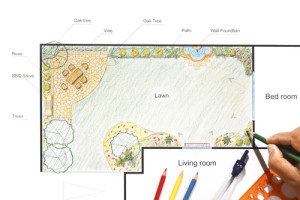 Clay soil is definitely an acquired taste for most gardeners, yet you might start swearing by clay soil once you hear some of the benefits listed below. First, though, what the heck is clay soil and how can it benefit your garden?
Clay soil is definitely an acquired taste for most gardeners, yet you might start swearing by clay soil once you hear some of the benefits listed below. First, though, what the heck is clay soil and how can it benefit your garden?
Clay Soil Vs. The Competition
Generally when you walk into a nursery, outdoors department or speak with a landscape maintenance company, you might be steered more towards silt soils or loam soils before clay. That’s because clay soil is composed of tiny plates or granules that can harden over time.
You’ve no doubt had the experience of plunking your shovel down into the ground, ready to get your garden going in the spring, and run up against clay. In spite of its hardness, though, clay soil is great for retaining moisture, nourishing your garden as well as retaining nutrients and fertilizers between individual clay particles.
Loam, relatedly, is a combination of clay, sand and silt and is very versatile, moldable and just easy for even inexperienced gardeners to work with.
Benefits of Clay
Part of the reason that loam soil is so moldable, to our main point, is that loam contains clay. The clay in the loam ensures that what you’re working with clumps into granules whereas the silt and clay components of loam help to retain moisture and nourish the plants in your garden.
Clay soil works wonderfully for annuals as well as perennial plants since the clay allows these plants to get a firm (and nourishing!) hold with their roots. The grip that perennials and annuals get with clay can withstand otherwise harsh humidity and temperature changes.
In short, clay’s fantastic as a garden design foundation since it provides a hearty root structure and allows plants to withstand harsh conditions. Moreover, you won’t need to water or fertilize as much with clay as with other soils. All good things.
Working with Clay Soil
Clay soil as a garden design foundation can accommodate a pretty wide range of shrubs, climbers, conifers and trees. Everything from popular conifers like ginkgo biloba and a deciduous evergreen like cotoneaster to rosa and fuchsia shrubs makes a great complement to clay soil.
To provide even more nutrients for these clay-compatible shrubs and conifers try adding a light mulch to your garden. Leafmold, composted bark and long manure work especially well with clay soil in terms of providing an easy-to-work-with mulch that does wonders for your plants.
Mulching Your Clay Foundation
When you actually get down to planting, mulching the plants up to three inches is a good idea for a few reasons.
Just a few inches down allows the right amount of moisture to hit your plants’ roots while tamping down weed growth and providing shielding from the elements.
One problem that people have with clay soil is that they sometimes overwater. Remember that clay soil retains water and moisture better than other garden foundations and, therefore, doesn’t need around-the-clock watering.
You’ll know that you’re doing too much watering when you notice a lot of the plants visibly retaining water and you notice globs of water on the clay surface the next day. These would both indicate that it’s time to cut back and let clay soil work its magic.
Creating the Perfect Garden
If you understand how clay’s small granules retain moisture and you know not to overwater, clay can offer a ton of benefits beyond more favored soil types.
You might consider planting eucalyptus trees, gorgeous flowering plants like bergenias and some of the conifers mentioned above for the perfect garden design. Contact Xeriscape today to get started.
Xeriscape Landscaping Ideas for Easy Gardening
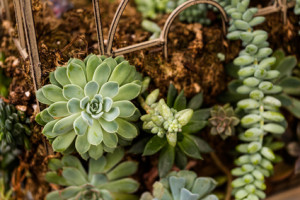 Xeriscape is a type of gardening that focuses on conserving water. You typically won’t see any lush green lawns; instead, xeriscape yards and gardens are full of local and drought-resistant plants, and typically involve creative uses of windbreaks and drip irrigation. They’re gaining popularity not just for their eco-friendliness, but because they’re very easy to maintain.
Xeriscape is a type of gardening that focuses on conserving water. You typically won’t see any lush green lawns; instead, xeriscape yards and gardens are full of local and drought-resistant plants, and typically involve creative uses of windbreaks and drip irrigation. They’re gaining popularity not just for their eco-friendliness, but because they’re very easy to maintain.
This school of gardening breaks a lot of the rules that many landscapers follow. It can be tricky to know where to get started, but here are a few ideas.
Research Xeriscape and Use Local Plants
We can’t advise you about what plants you should be using, because it’s particular to your region and your aesthetic tastes. Ideally, you want to rely as much as possible on rainfall, and the best way to do that is to use drought-resistant plants that are adapted to your area. Exotics are typically harder to maintain, and invasives often suck up water. An added benefit to choosing local plants is that local wildlife will seek your xeriscape garden out!
So head to your local library, check online, or go through a local greenhouse and ask questions of the staff there. Landscaping 101 applies here: be sure you’re choosing plants that will thrive in your soil’s pH, and with the different amount of sunshine your xeriscape gets. Remember to choose a variety of colors, and try to choose plants that will bloom over the course of the year rather than all at once.
Compost Before You Plant
After your plants are in the ground, it can be tricky to compost your xeriscape. Instead, add the compost while you’re prepping the soil for your plants. This doesn’t just make the soil richer — it also helps it retain moisture.
Permeable Paving
Asphalt, tile, or other paving surfaces catch water and cause it to puddle and eventually evaporate, where it’s lost. This “hardscaping” can also become very hot in the sun, which affects moisture absorbtion and can make your plants wilt. Using gravel, sand, or a comparable paving material on your paths lets water seep down into the soil to water your xeriscape plants.
Grade on a Curve!
Try adding a slight grade, or even terracing, to your xeriscape garden. Remember, it doesn’t help if the water puddles, or runs out to the street. You want the water to flow gently downhill, so that it trickles over the surface of the soil and is absorbed.
Use Mulch
Mulch heavily around your plants! Three to four inches is enough to keep the soil’s moisture in, and as the mulch’s bottom layers degrade they fertilize the soil. While gravel is another xeriscape option and it works great, some people find that it makes their gardens look drier and more like a desert, compared to how mulch looks.
Rainwater Harvesting and Clever Irrigation
Even with clever xeriscape techniques, you will still need to water your garden. This is particularly important for plants that are young or just getting settled, because they’re still building their root systems. Collect water to irrigate by hooking a rainwater barrel up to your gutter. Make sure you water during the cooler evening hours, and try using a soaker hose or an automated drip irrigation system. These saturate the soil, so as little as possible is lost.
Xeriscape Landscaping in Sonoma County
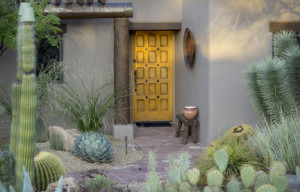 Xeriscape Why?
Xeriscape Why?
Xeriscape became a word invented by Denver Water Department when forbidding watering in summer. Sonoma residents must:
- select plants appropriate to your climate,
- mulch plants to help them retain moisture
- care for your plants properly
- keep plants healthy
- Plant shrubs, trees and other attractive plants where grass used to be.
The foregoing basics reduce water consumption 60 percent. Instead of a monotonous expanse of lawn in shades of green to brown, your yard can become rich with variety and interesting to observers. Filling your yard with a variety of hardy drought tolerant plants indigenous to your area is making a pact with Mother Nature that you are on her side. You are now going to help her with a bounty of beautiful plants she worked over 1,000 years to perfect for your exact piece of land.
Prepare the Yard Soil
- Pick up a fistful of thoroughly wet soil from your yard and squeeze it into a ball. The ball will stay formed or will crumble apart.
- Add organic material to your soil if the ball of dirt crumbled quickly. Compost or manure helps crumbly soil retain moisture.
- Add sand or ground bark to the soil if the ball of dirt formed a tight, hard ball. Hard, clay soil allows all water to run off quickly before it even has a chance to reach a plant’s roots.
Grow Plants Nature Designed for Sonoma
- Grow plants native to the Sonoma parched earth. They adapted mechanisms over hundreds of years to tolerate and cope with your weather and water gauge, so require little watering. Landscape companies can recommend plants for you so that your unique taste can still be displayed in your xeriscape garden.
- Plant trees suited to dry landscaping, such as California buckeye, which though their seeds are poisonous, make great shaped trees. The U.S. Department of Agriculture plant hardiness dictates zones 6a and higher for Sonoma.
- Plant drought-tolerant xeriscape shrubs like California wild lilac, best in USDA zones 5b or higher with lovely flowers. California wild lilac can grow in either full sun or partial shade.
- Choose drought-tolerant ornamental grass like blue lyme for full sun or light shade. This clumping grass is very hardy, with gray-blue foliage and grows up to 4 feet tall with very little water.
- Plant xeriscape succulents in your hard that will store water in fleshy leaves and need little water from you. The Century plant, or Agave Americana, grows well in USDA Zones 9a through 11 in full raging sun or a little shade. Reaching 8 feet in height and 12 feet wide. They provide a focal point if you just make sure you have a safe distance between its spiny leaves and foot traffic.
Follow Xeriscape Principles
- You must cover your entire garden with a layer of mulch or compost so that the need for moisture due to evaporation is nil. Compost has nitrogen, giving plants nutrition and improving texture of your xeriscape yard soil.
- Water in early morning or evening to minimize any evaporation. Drip irrigation systems are the most effective method for Sonoma.
List of Zero to Low Water Need Plants for Sonoma Area
There are many drought tolerant plants needing no supplemental summer water once established. While these are uber-drought tolerant xeriscape plants, some will do a bit better with some water. Some fine shrubs that meet these criteria are:
- Arbutus Onedo
- Acca Sellowiana
- Baccharis Pilularis
- Buxus
- Callistemon spp.
Contact your local landscape company to learn the multitude of xeriscape plants that can beautify your home without watering!
Winter Trees
When comparing winter to the lush of spring, summer and fall colors, landscape in the winter can seem subdued. But don’t be too quick to dismiss the garden in the off season. Evergreens are a great and obvious choice to add to your landscape, but what about winter trees? Winter trees offer interesting bark, brightly colored berries, and interesting form and are filled with beautiful secrets of seasons past, as well as seasons to come.
Winter trees can add structure to the landscape and garden and some make excellent hedges and screens whilst others are ideal as statement specimens. From flowering cherries and crab apples to evergreen yews and weeping willows trees offer different leaf size, shape and color. Many have attractive flowers, fruits and seeds and there are those that flower magnificently in spring and those whose leaves offer brilliant autumn color just before leaf fall.
Here are DK Landscaping’s top ten list of trees we recommend planting in the winter.
1. Himalyan Birch (Betula utilis var. jacquemontii)
2. Silver Birch (Betula pendula)
3. Snowy Mespilus (Amerlanchier lamarckii)
4. Christmas berry ‘Red Robin’ (Photinia fraserii ‘Red Robin’)
5. Freeman’s Maple (Acer freemanii ‘Autumn Blaze’)
6. English oak (Quercus robur)
7. Pin oak (Quercus palustris)
8. Crab apple (Malus ‘Evereste’)
9. Crab apple (Malus ‘Rudolph’)
10. Vilmorin’s mountain ash (Sorbus vilmorinii)
By planting trees you can reduce or improve your carbon footprint and generally enhance the environment. Trees can transform an area by introducing welcome shade, protective shelter and wildlife and are an investment for future generations.
All trees require some support and protection such as stakes, tree ties and tree guards. Fertilizer can be added to the planting hole and mulch can be added after planting to preserve moisture and keep down weeds.
Newly planted trees do best when exposed to moderate temperatures and rainfall and they need time to root and acclimatize before the onset of summer heat or the harsher temperatures of winter. Container grown trees can be planted at any time of the year providing the soil / ground is not frozen or water logged.
Got Curb Appeal?
First impressions are everything! The same concept holds true when speaking about your landscape. From a real estate perspective, a good first impression, aka “curb appeal” is about using your landscape to enhance the appearance of your home. Whether you want to boost your curb appeal, market the value of your home or simply want to transform your space to make your lawn & garden look pristine, DK Landscaping helps you come up with the inspiration for the look you desire and making your property the talk of the neighborhood:

Here are a few simple ways to enhance and maintain your landscape:
General maintenance: Mowing your lawn, pruning back trees/shrubs weeding, fertilizing, mulching, leaf and debris-free to watering will keep your yard looking beautiful and eye-catching throughout the entire growing season.
Visually inviting entryway: There are a lot of little things you can do to spruce up your front entryway including keeping it debris free. If you have an old, dull concrete stoop with cracks? Update to a beautiful stone stoop or porch.
Providing a focal point: Plantings, landscape lighting like lamp posts, and decorative pieces like a small water fountain are good ideas.
Colorscape: Adding a splash of vibrant annuals and perennials flowers and plants will make a big statement.
Landscaping lighting: A small yet impactful solution, outdoor accent lighting can not only enhance your yard aesthetically but also eliminate any dark, shadowy areas at night and prevent any safety hazards.
Updated driveway and/or walkway: If your driveway is old and outdated or starting to crack, updating it can have a big impact. There are pavers that imitate any stone for driveway landscaping—brick, travertine, limestone, etc. Same goes for any walkway in your yard. A new stone or paver walkway is a great front landscaping idea.
Stairways: Like retaining walls, stairs are ideal for hilly yards. Adding a staircase walkway to your sloped yard is a great way to add curb appeal—and give your visitors easier access to your door.
It is pretty easy to do many of these things yourself, but perhaps your front yard is devoid of plants and eye-catching features. You may consider planting a tree as a focal point, installing a trickling fountain, or even building a patio. In addition to these memorable details, it is important to use color to attract and focus attention on positive attributes of the landscape. This not only requires planning, but you may need a landscaping company to see some of these designs through.
Having good curb appeal makes selling your house easier, as potential buyers are looking for an aesthetically pleasing home. But don’t brush off having curb appeal even if you are not putting your house on the market. An attractive landscape design is always important!
What’s Growing On?
Flowers always make people better, happier, and more helpful; they are sunshine, food and medicine for the soul. ~ Luther Burbank
Around this time of year I start to get spring fever, that urge to go outside and dig around and plant something. Even if you naturally don’t have a green thumb, flower gardening allows you to use your artistic playful side, being outside in nature soothes your soul, and a beautiful flower garden increases the curb appeal of your home. One of the first things a flower gardener learns is that there is not one date when it is best to plant all flowers.
This group of exotic and tropical summer bloomers can be planted right now and all through April in most of the country; planting times for colder regions of the North are typically from April to June, depending on the bulb.

Cannas are a personal favorite for their showy, tropical-like flowers and vibrantly-colored or variegated banana-like leaves. Dahlias offer numerous flower types from dazzling daisies, to showy pom poms, to show-stopping colorful blooms. Other note-worthy spring-planted bulbs include gladiolus, windflower (Anemone coronaria), pineapple lily (Eucomis), freesia, summer hyacinth (Galtonia), begonia, red hot poker (Kniphofia), Asiatic and Oriental lilies (Lilium), and Aztec lily (Sprekelia). 
So start by finding an empty spot in your yard that you see frequently that could use some color. If you don’t have an open bed, remove a patch of lawn in front of shrubs. Measure the size and note what time of day and how long the sun shines on that spot. Consider the following when designing your garden: hardiness, color, fragrance, height, time of bloom and size of plant. Do you want to attract hummingbirds, butterflies, or song birds? Or are you trying to create a work of beauty just for you? Next, visit your favorite full service nursery. They will help you pick out the right flowers for that spot. And be sure to ask about fertilizer, weed preventer and mulch.
Here are three easy ways to start planting your summer bulbs:
- Start with bulbs that are plump, firm and feel heavy for their size. Prep the soil by working a complete fertilizer into the entire bed or bottom of planting holes.
- Arrange the bulbs in groups or random clusters, then plant them at the depth recommended on the package with the pointed side or sprouting side facing up.
- Cover the bulbs with soil mixed with compost and keep the soil moist to slightly moist from planting until the foliage of the mature plant dies back.
One of the biggest things about gardening is the upkeep, depending on the plants and flowers you choose this can require little maintenance or high maintenance. Be realistic about your daily scheduled and how much effort you are willing to put in weekly to maintain your gardens.
Work all day? Busy with kids? Then opt for low maintenance plants that need very little maintenance or call DK Landscaping to keep your yard looking beautiful all year long! (707) 280-3632.
Springing Forward
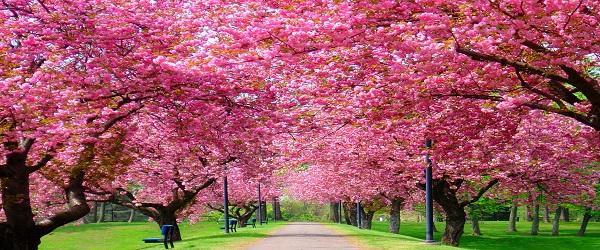
Spring is an exciting and one of the most beautiful times of the year. The days are becoming longer, the weather is getting warmer, you awake to birds chirping in the morning, and spring blooms and lush green plants come alive in your landscape.
After a long winter, your lawn and gardens may be looking a big ragged and dreary. So before you pull out your lawn furniture from storage, get in the “spring spirit” by getting your yard looking spectacular. Help your lawn, trees and shrubs get off to a healthy growing season with these six luscious landscaping tips:
1. ASSESS YOUR TOOLS: Check, maintain, sharpen and repair your landscaping tools for a smooth spring and summer experience. This includes your lawnmower, weeding/pruning tools, rake and edger.
2. CLEAN UP: Clean out dead leaves, branches, trash or anything else that could impair your garden and lawn’s growth. Prune
3. WEED CONTROL: Uproot any existing weeds you find out of flower beds and check your lawn for any weed growth, whether they’re leftover stalks from last year or brand-new shoots. Once weeds are clear, DK Landscaping recommends spending between 10-15 minutes a few times per week to prevent new weed growth in your garden.
4. FERTILIZE: Make sure your early spring fertilizer has less nitrogen and more phosphorus to promote strong roots. Be sure to keep fertilizer on target to prevent run-off, and sweep fertilizer granules that may reach pavement back onto your lawn. Give your lawn a slow, steady watering about once a week, but adjust depending upon rainfall, grass and soil type in your area.
5. MULCH: A fresh layer of mulch can take any flower bed from drab and dreary to beautiful. DK Landscaping suggests applying four inches of mulch over the top soil, which will help retain moisture and prevent growth of those pesky weeds.
6. IRRIGATION: Check your in-ground sprinkler system and make sure all your sprinklers are working properly. Remove any overgrown grass that may have covered up any part of the pop-up heads. Check the sprinkler heads for cracking and breakage from last year and have them replaced if needed.
It’s the perfect time in Northern California to gather up tools, slide into your boots, pull on your garden gloves, and enjoy that first breath of spring.
DK Landscaping specializes in landscape maintenance, irrigation, clean-up and colorscape in Sonoma County. Contact Kathy or David Lee for more information and a consultation on your landscaping (707) 280-3632.
Rainscaping Your Landscape
With the rainy season still in store for us in Northern California, it is vital that your landscaping have proper water drainage built in to the design. Without proper drainage, your home and landscape can suffer greatly. Not only can it destroy your plants, yard and your neighbors’ properties, but can lead to serious structural problems for your home and hardscapes, such as cracked housing foundations, water leaks, and flooded sump pumps.
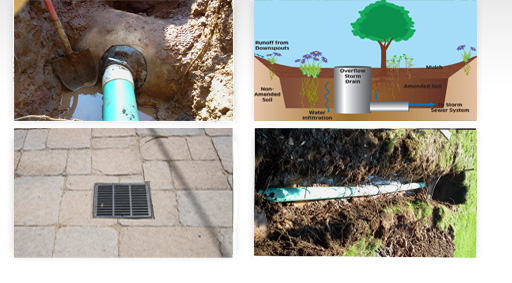
To avoid the nightmare of rather expensive structural problems and flooding, DK Landscaping provides some solutions to poor drainage:
- Proper Grading: Grading (if surface drainage is possible) is often the most inexpensive and most effective solution to correcting an area with poor drainage.
- French Drains: A French drain is basically a ditch lined with rocks or gravel that helps drain water away from an area. French drain works on the principle of gravity, being slightly sloped down from the area to be drained to the area where one wishes to redirect the water. Excess ground and surface water percolates into the French drain and is directed away.
- Catch Basins: Catch basins are simply a reservoir designed to trap debris so that it cannot enter the drainage pipes. Anytime your source of water is above ground, a catch basin can collect the water so that it can be piped away underground. Basins are used primarily when grading is either not possible or when it would create an undesired/unusable space.
- Sump Pumps: Commonly used back East where most homes have basements. Sump pumps are sometimes the only way to remove unwanted water from a location. Many homes have situations where there is no way to drain storm water from their property. If you don’t have a slope away from your property or there is a lower area or sunken area, a sump may be the solution to get the water out.
The primary goal of proper drainage is to remove the water and put it where it belongs: on the street! So whether you are doing it yourself or hiring a professional landscape company, you want to make sure the proper installation methods are being used. If you don’t know what the above bullet points mean, you probably want to hire professionals… this will not only save you a headache, but money in the long run!
For more information and a free consultation on your drainage system, please contact Kathy Lee at DK Landscaping. Kathy is our QWEL (Qualified Water Efficient Landscaper) Certified Irrigation Expert. We are also a certified WaterSense Partner. QWEL and WaterSense are certified by the EPA.
Protecting Your Landscape From Frost Bite
The temperatures in Northern California are beginning to drop which means winter will be before us, before we know it. Night time temperatures that get down to freezing and below will damage some trees and plants if you don’t take precautions against frost. These low temperatures can begin late November and continue through February and beyond.
DK Landscaping helps you prepare your landscape and provides tips to protect your delicate plants from frost bite.
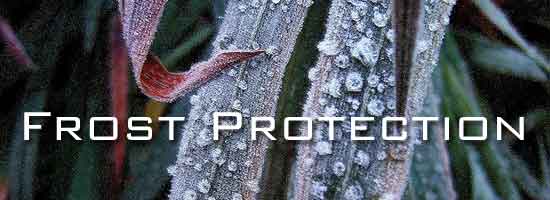
WINTERIZE
Fall is prime time to clean up your landscaping and remove the dead landscaping before it gets too cold. Removing dead plants can also stop the growth and spread of fungi that could infect your plants’ new growth in the spring.
PLANT
Planting trees and shrubs in the fall is a an optimal time before the first frost arrives and best time to take advantage on some great end of the season deals. Planting in the fall gives roots plenty of time to become established before the next growing season begins. Not only will you get to enjoy the changing leaves for a brief time, you will also put less stress on your young trees because of the cooler weather and rain conditions fall offers.
MULCH
Mulching can be a great first step in preparing for winter’s frost. If you are unfamiliar with mulching, check out our previous blog post called Mulch About Fall. There are many benefits to mulching your lawn and plants, especially before winter. Mulching in the fall can help protect your plant’s roots as well as help them retain moisture during the cold, dry winter.
Just a few preparations for winter can guarantee that your landscaping will come back fresher than ever in the spring.
For more information on the care of your landscape, please contact David or Kathy Lee from DK Landscaping (707) 280-3632.







